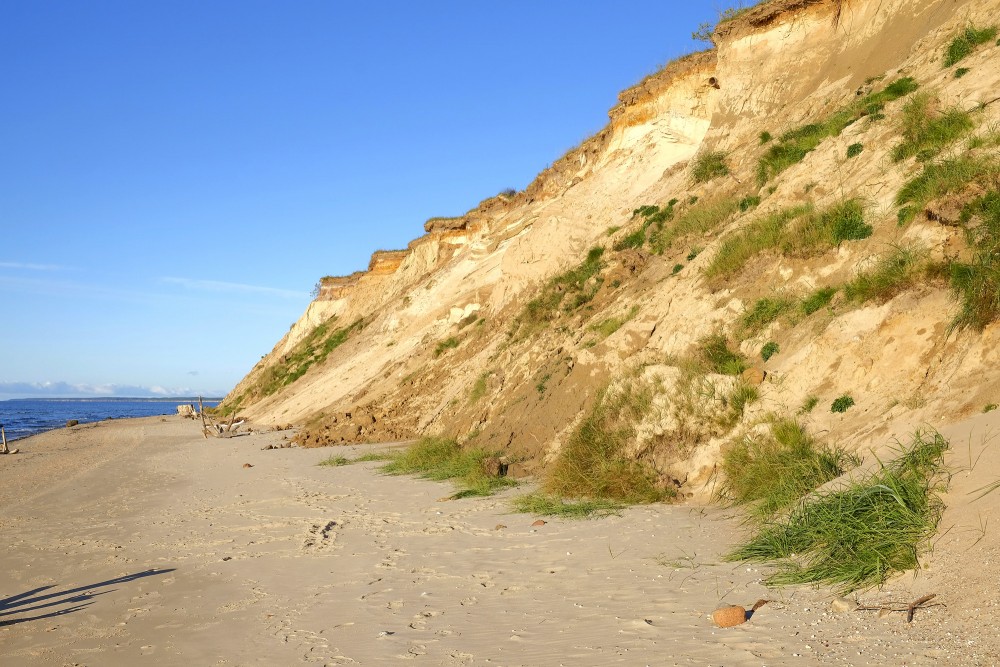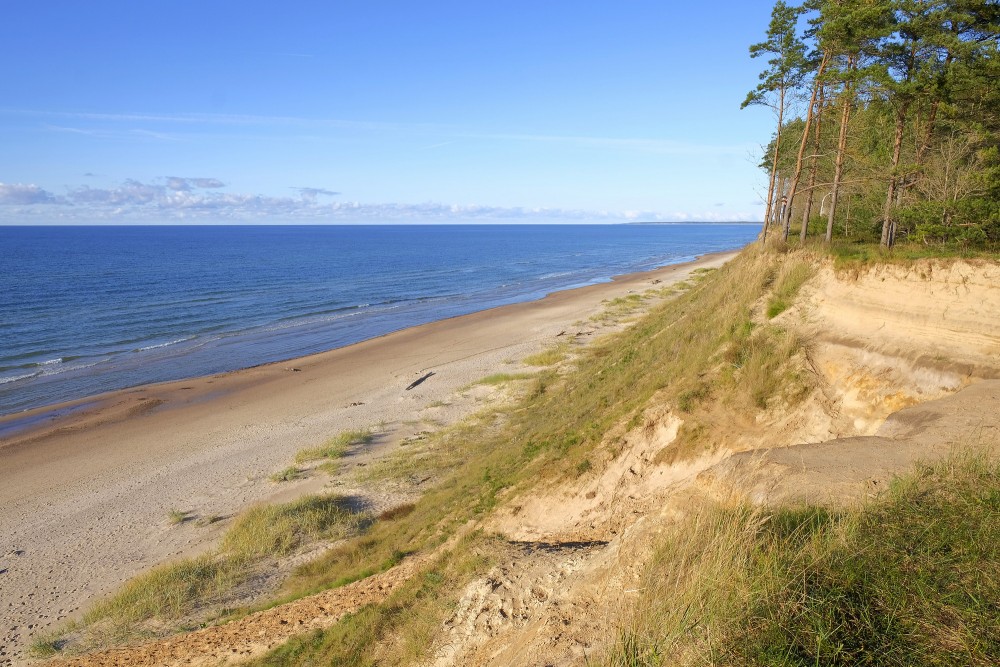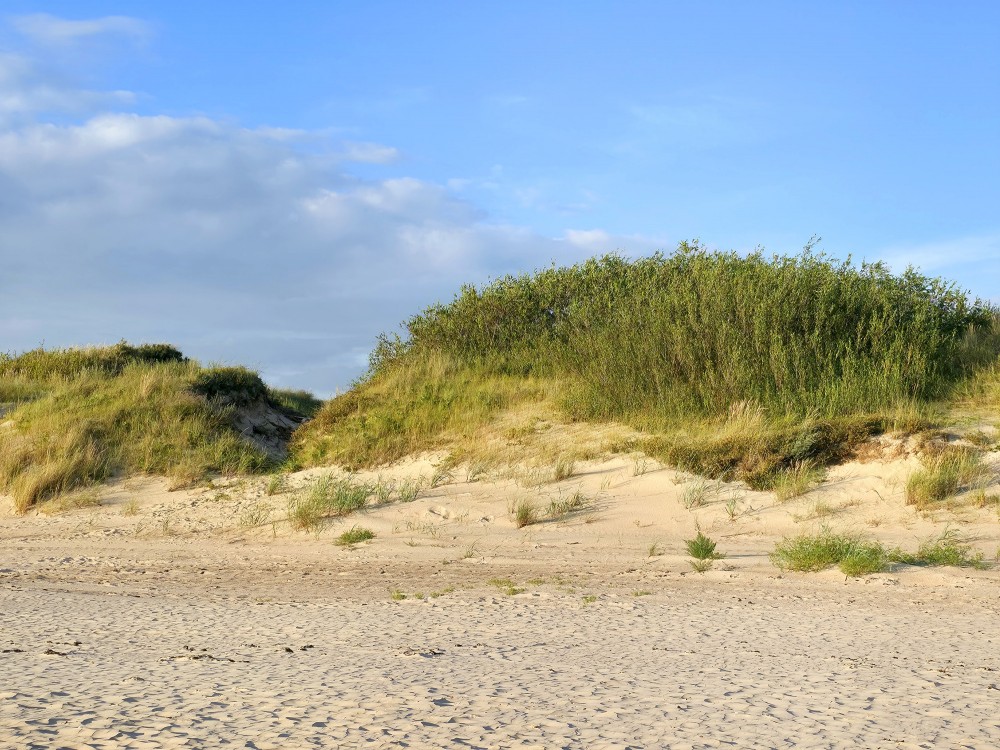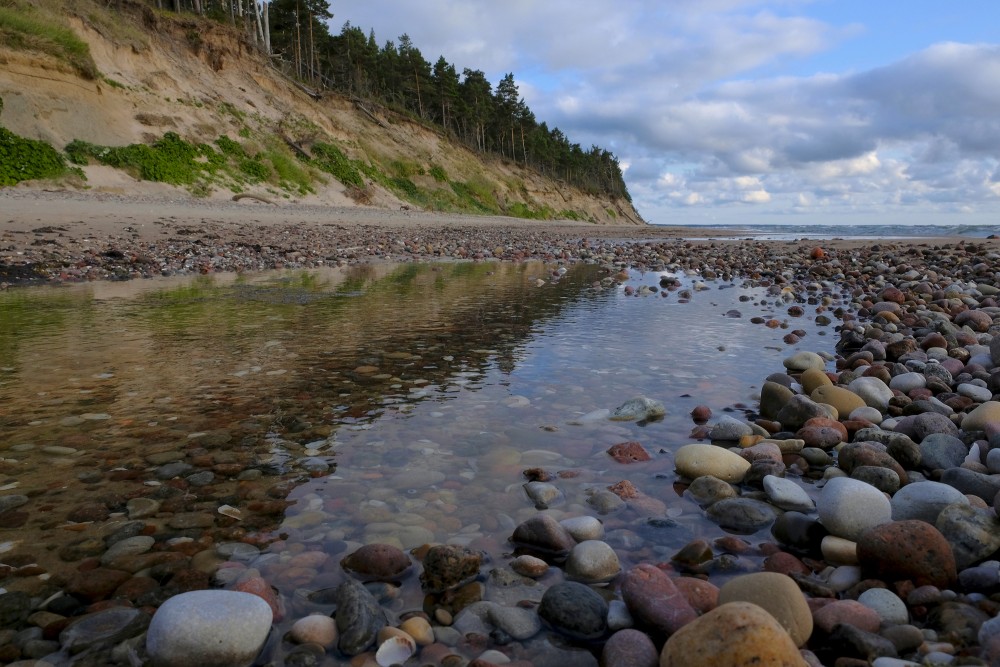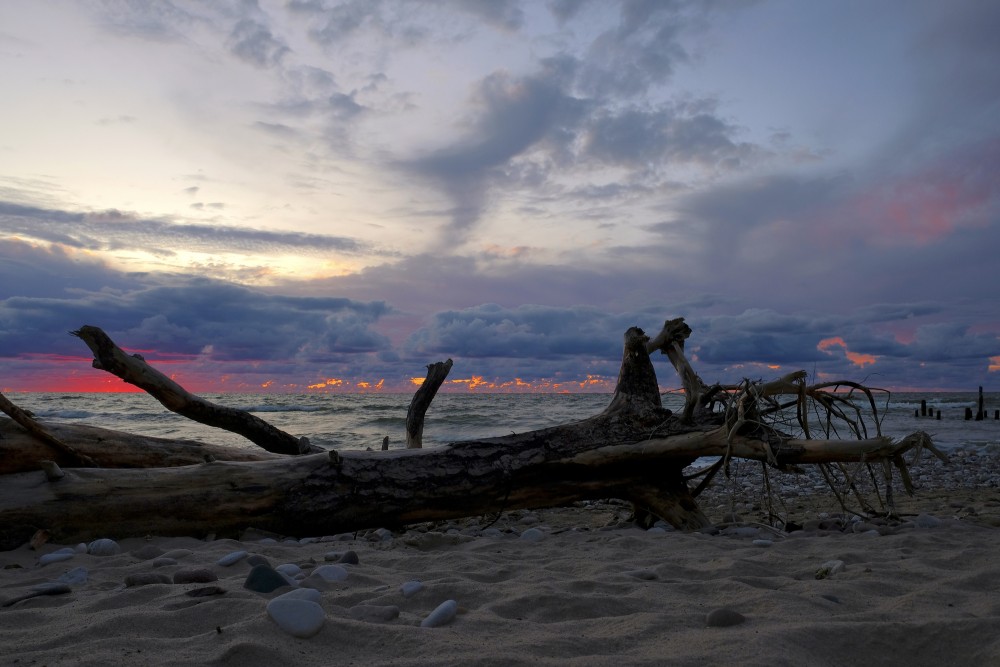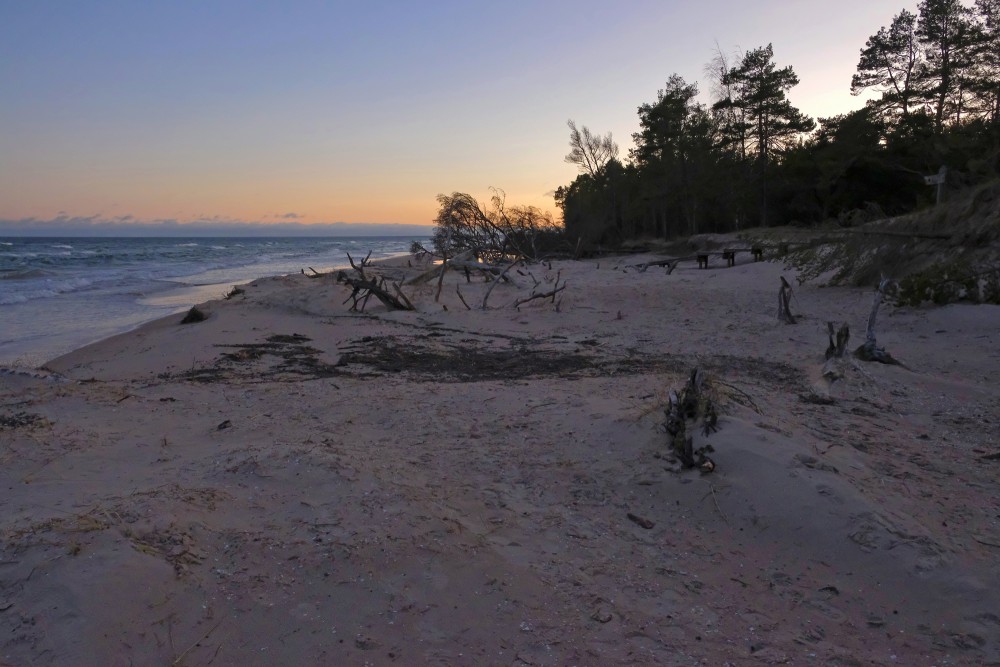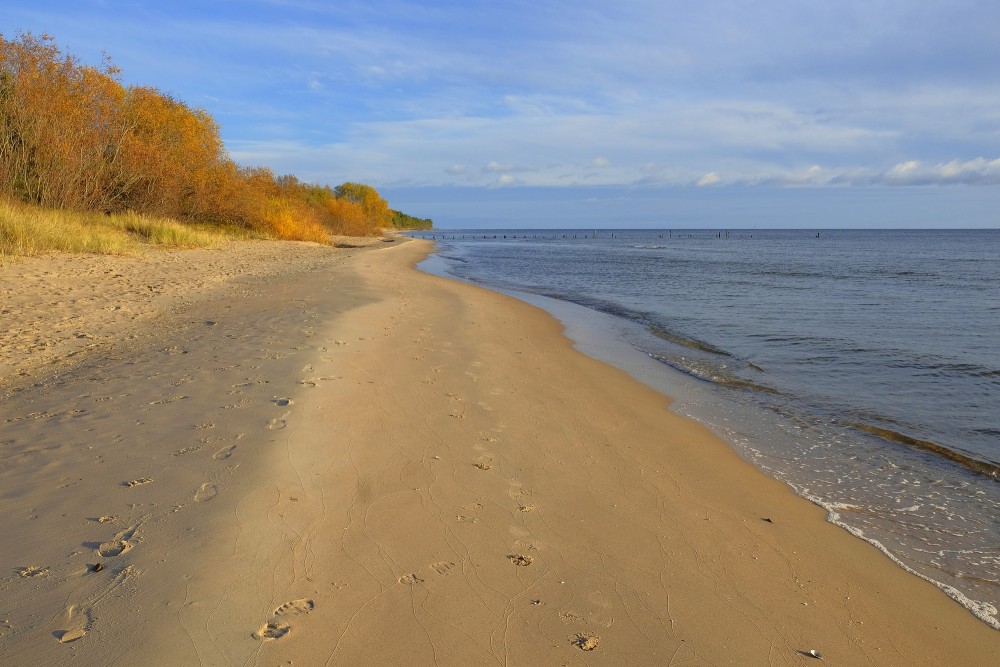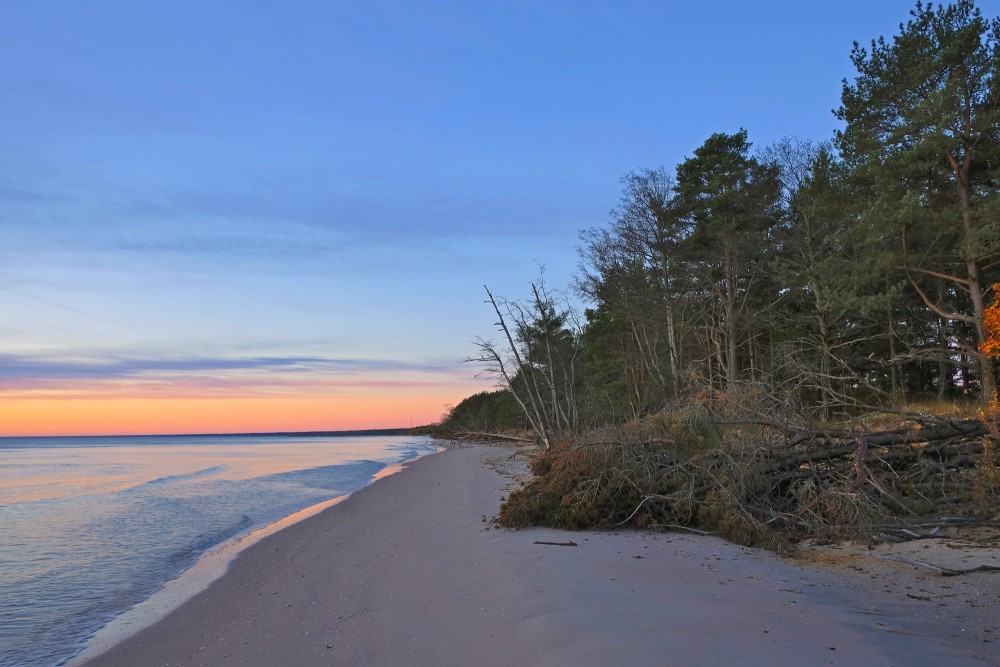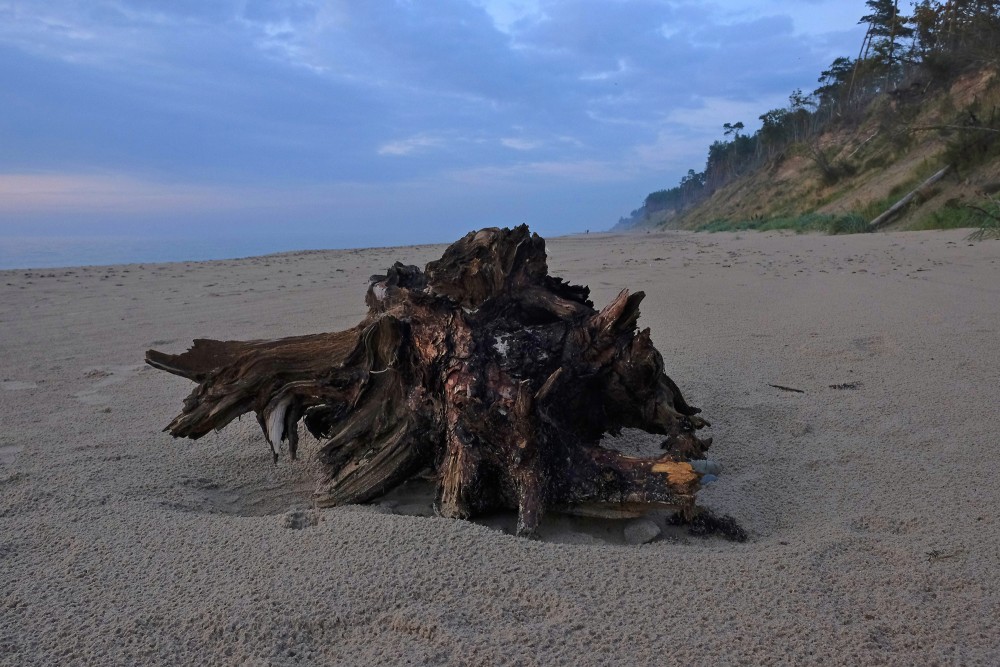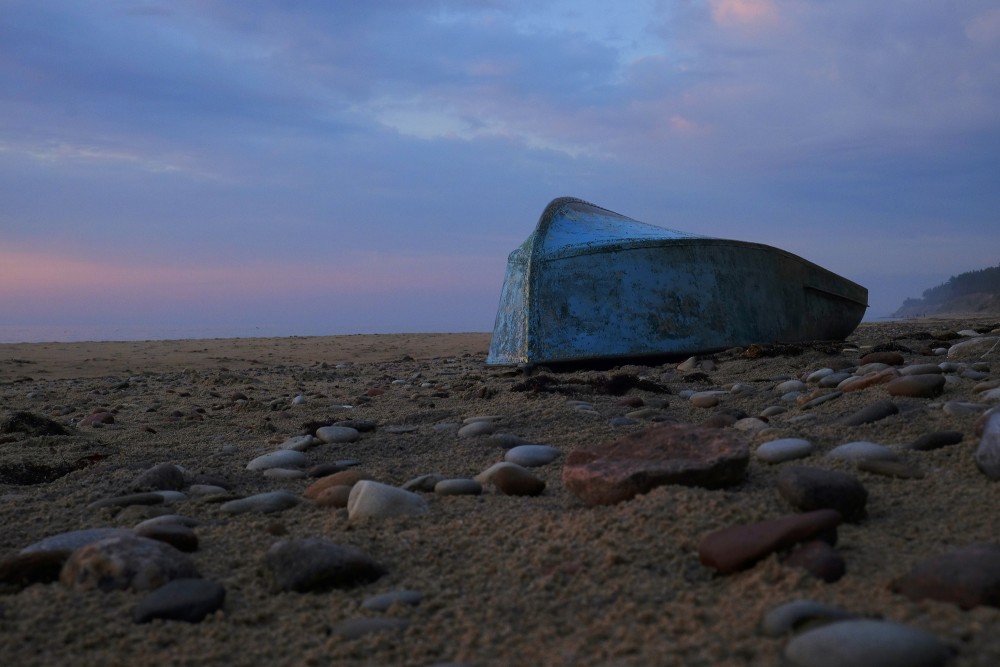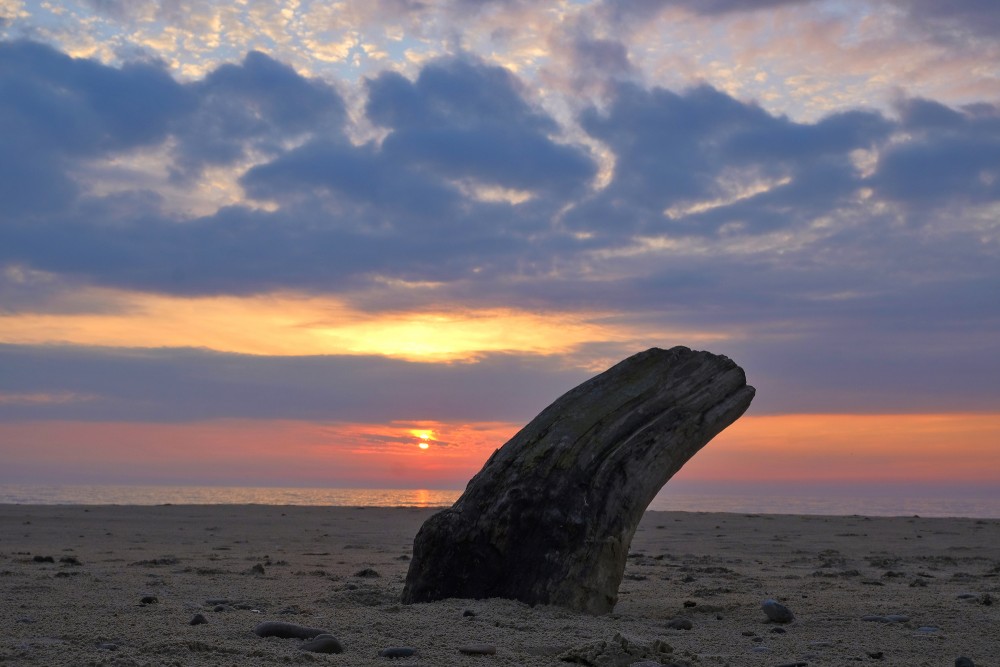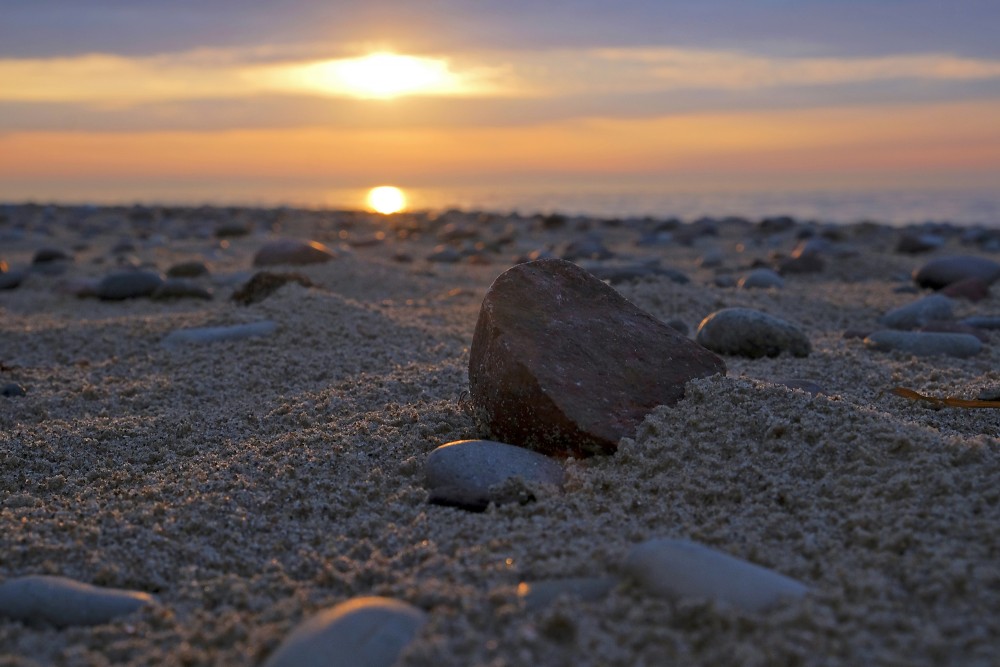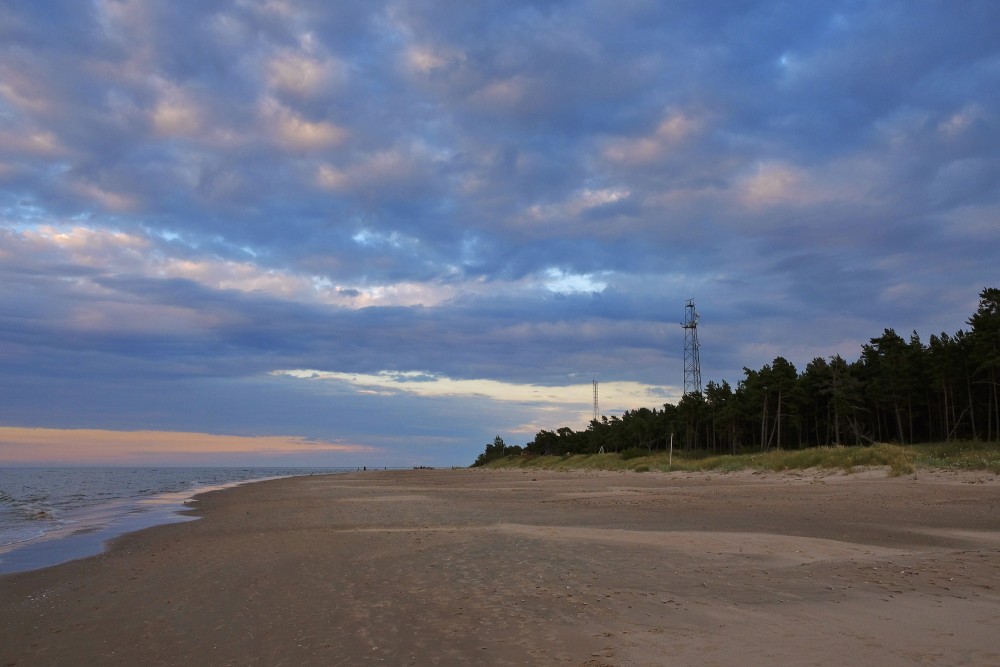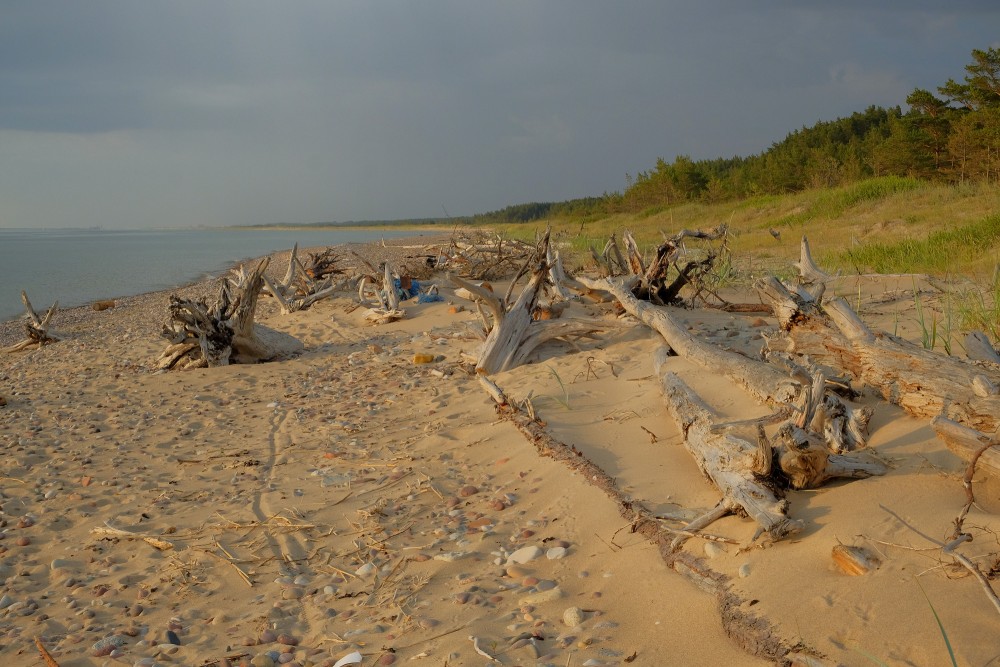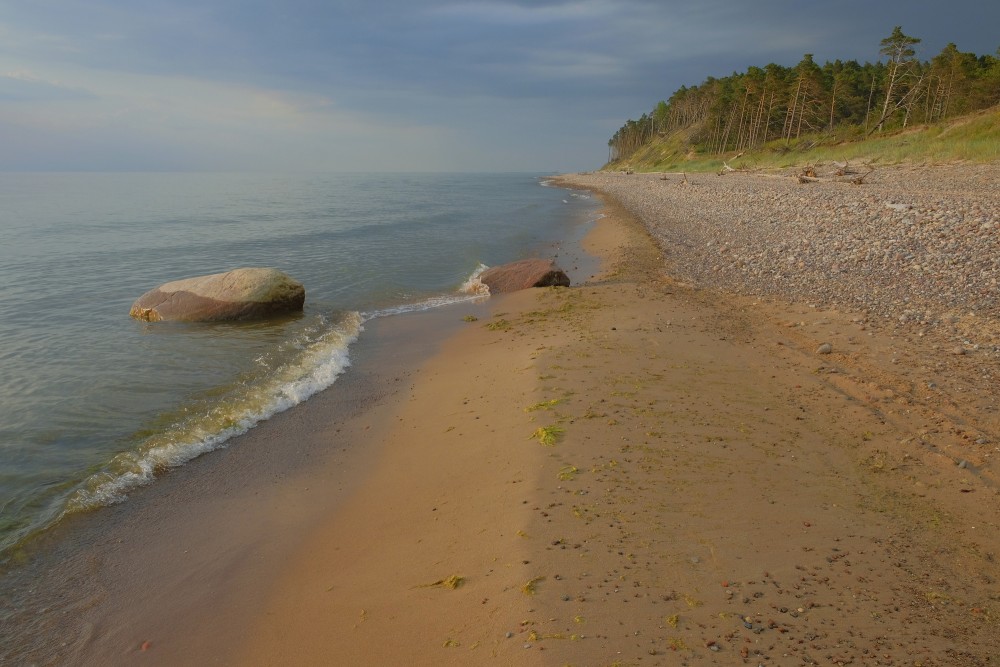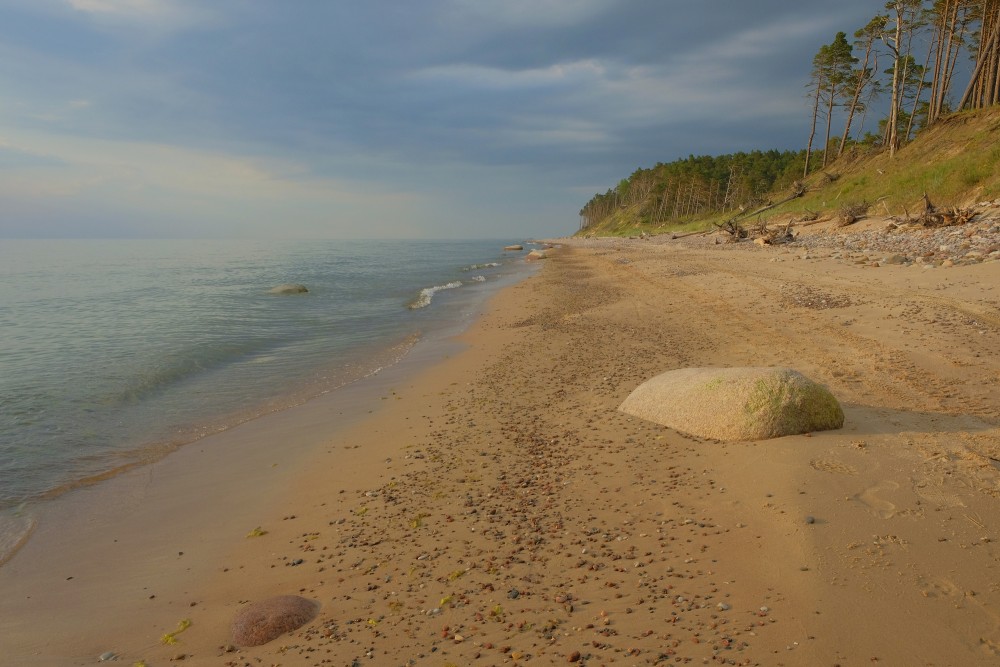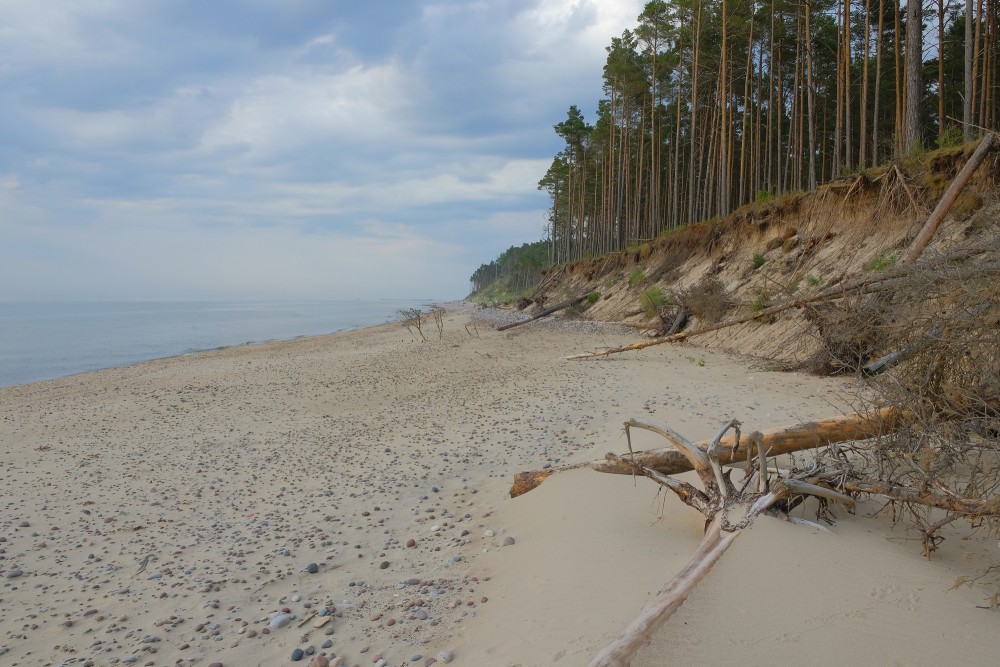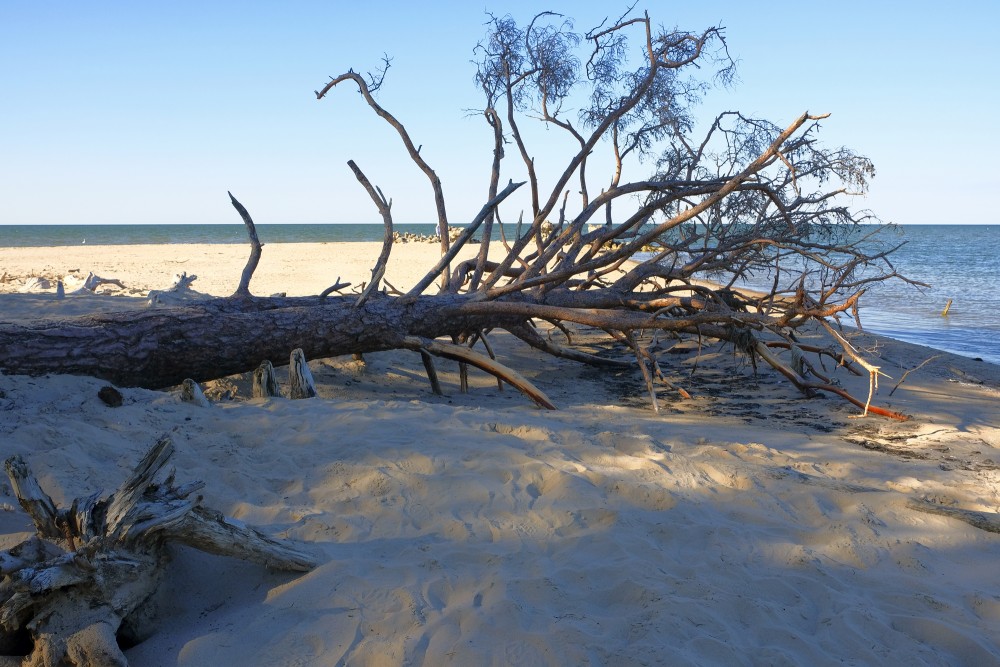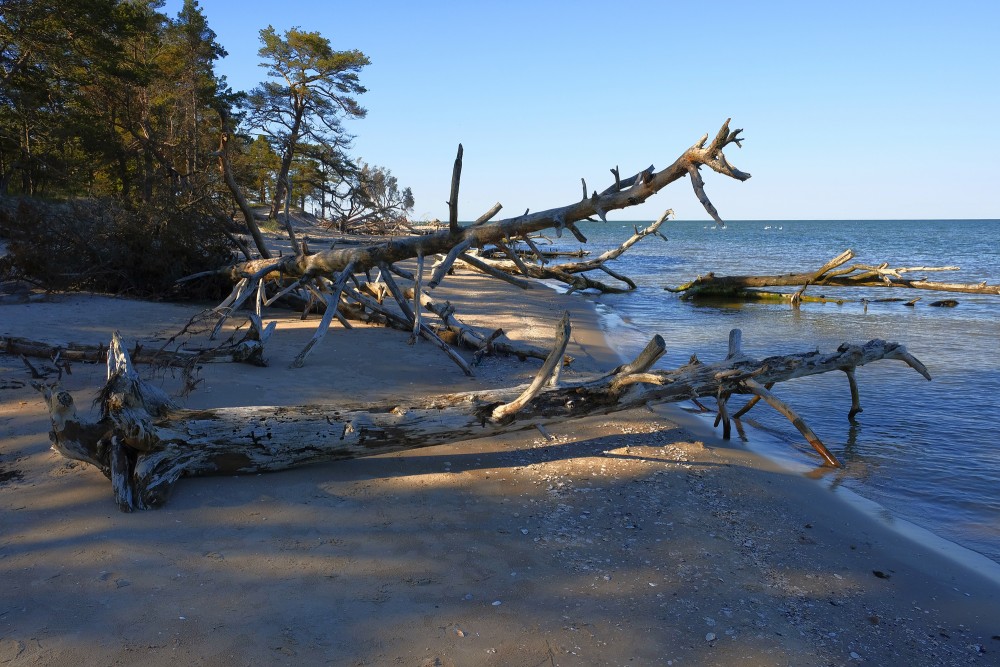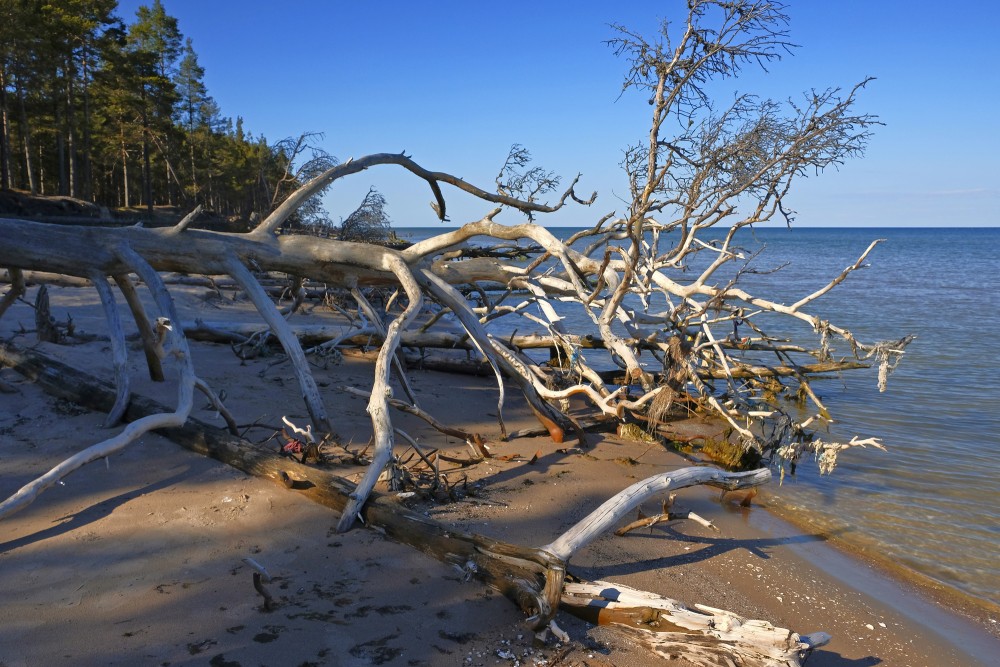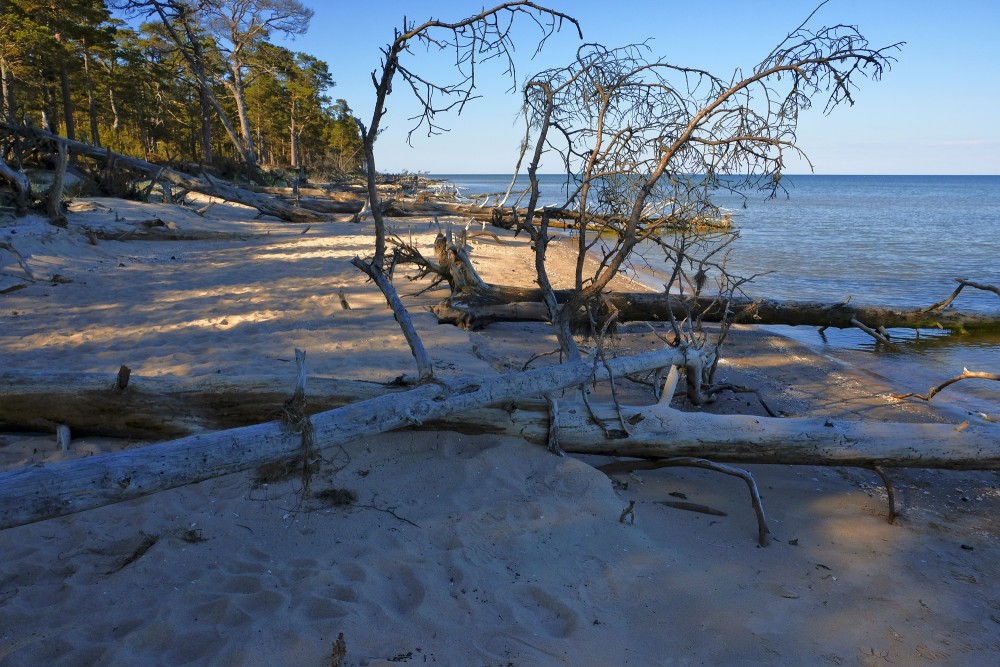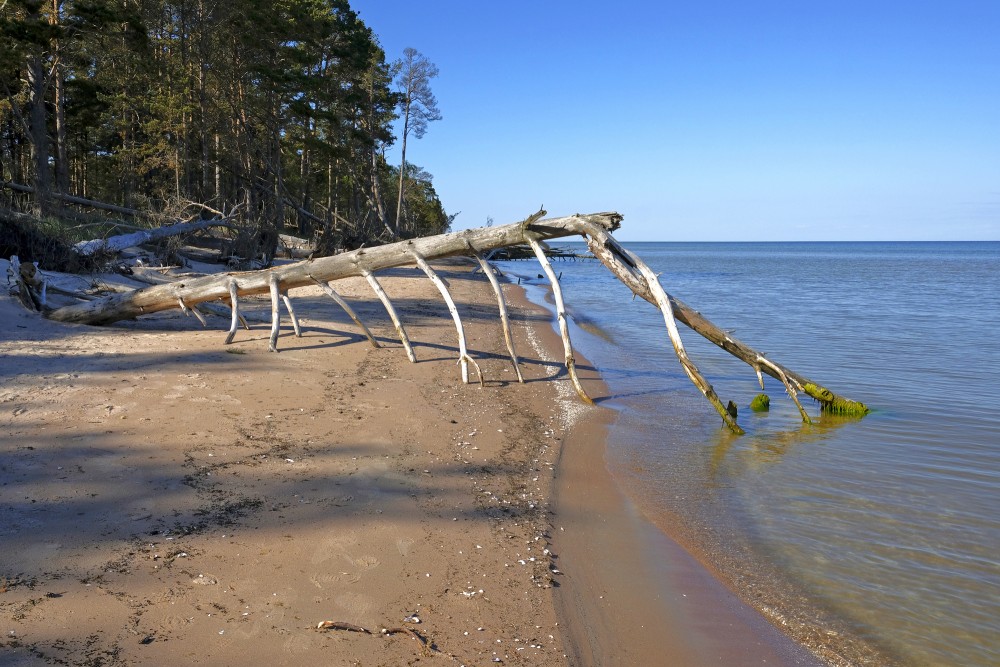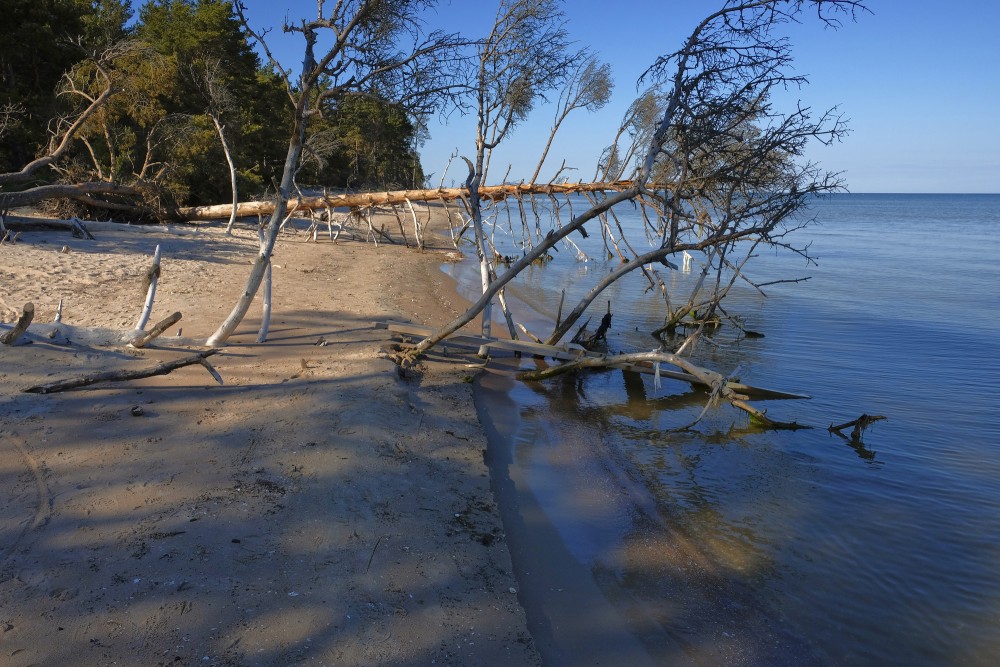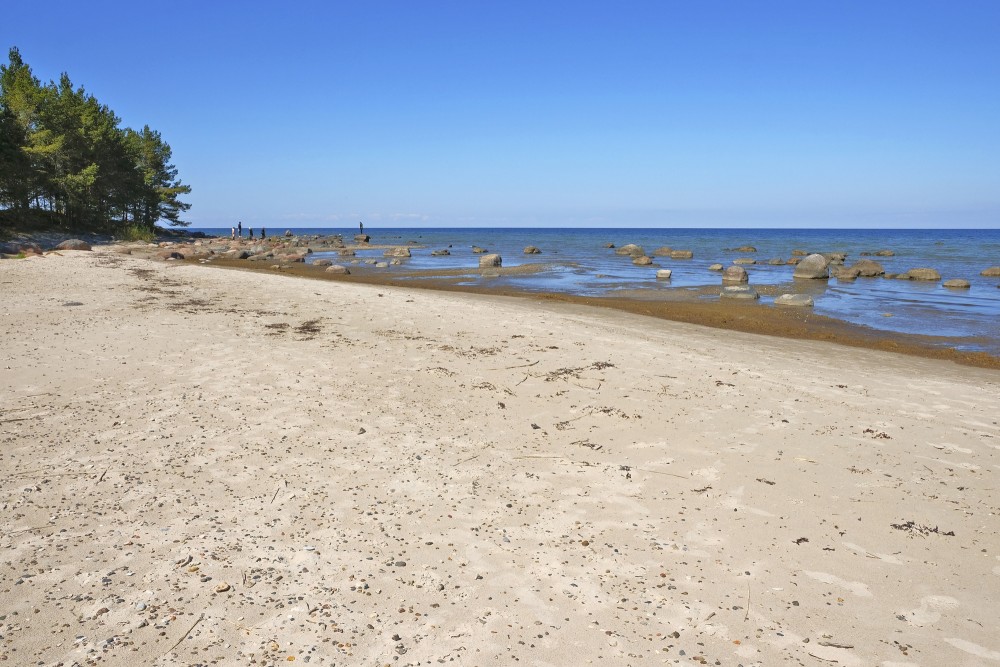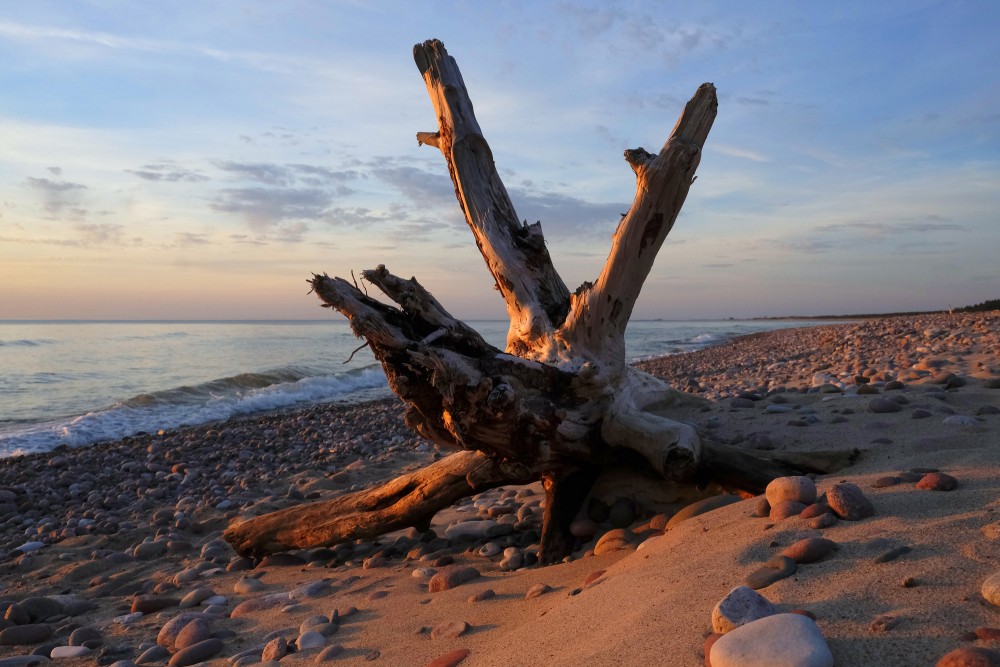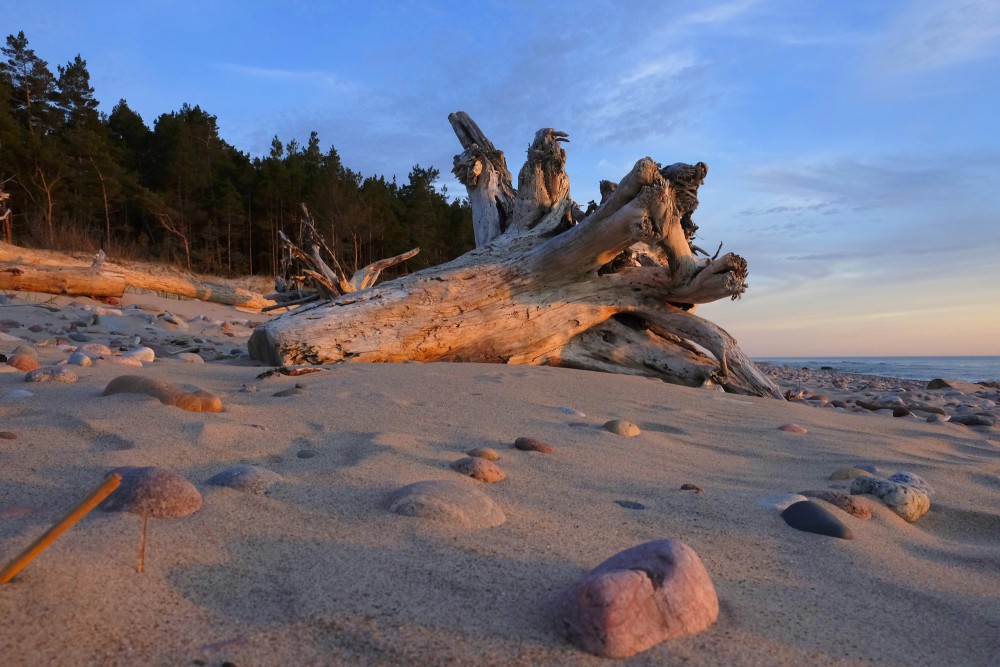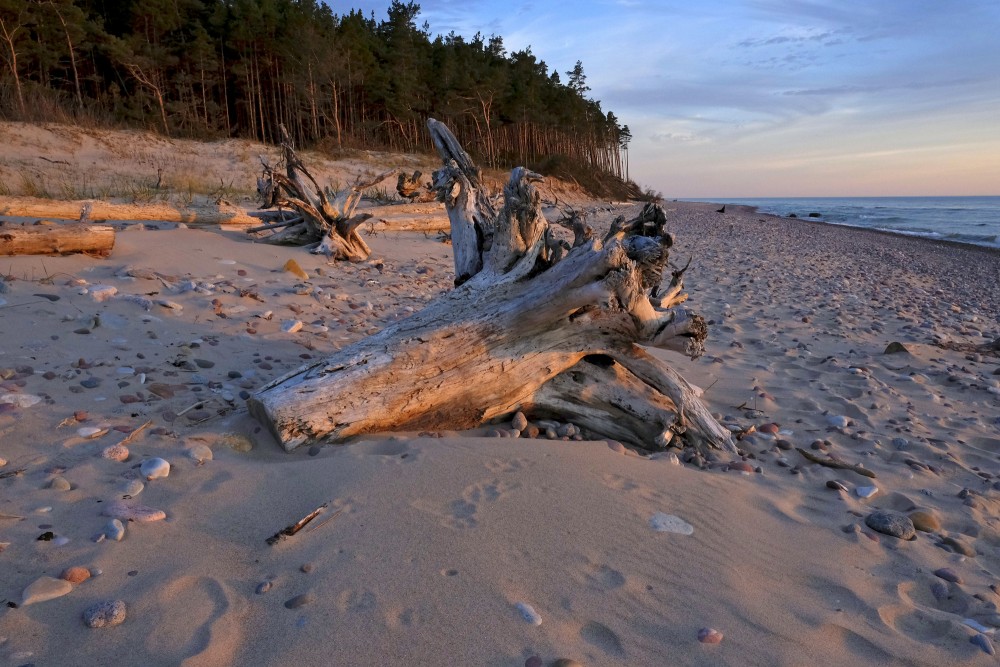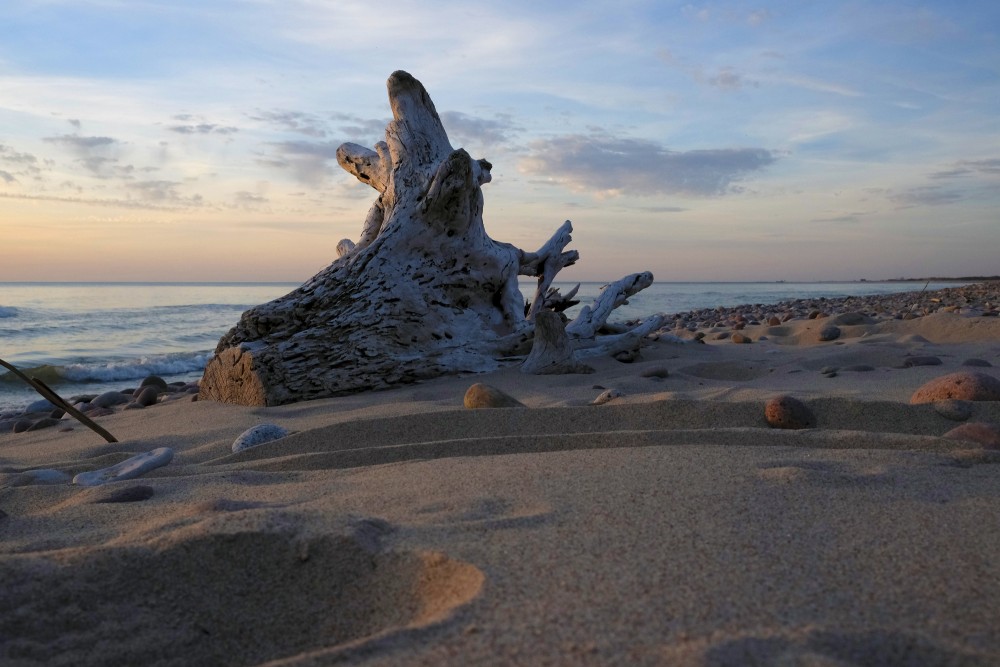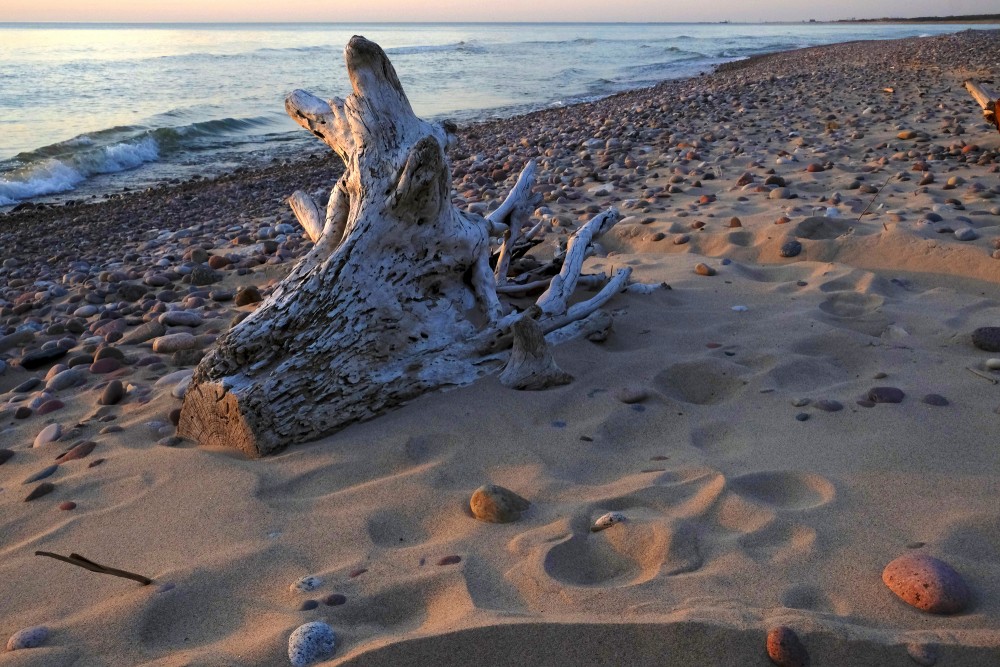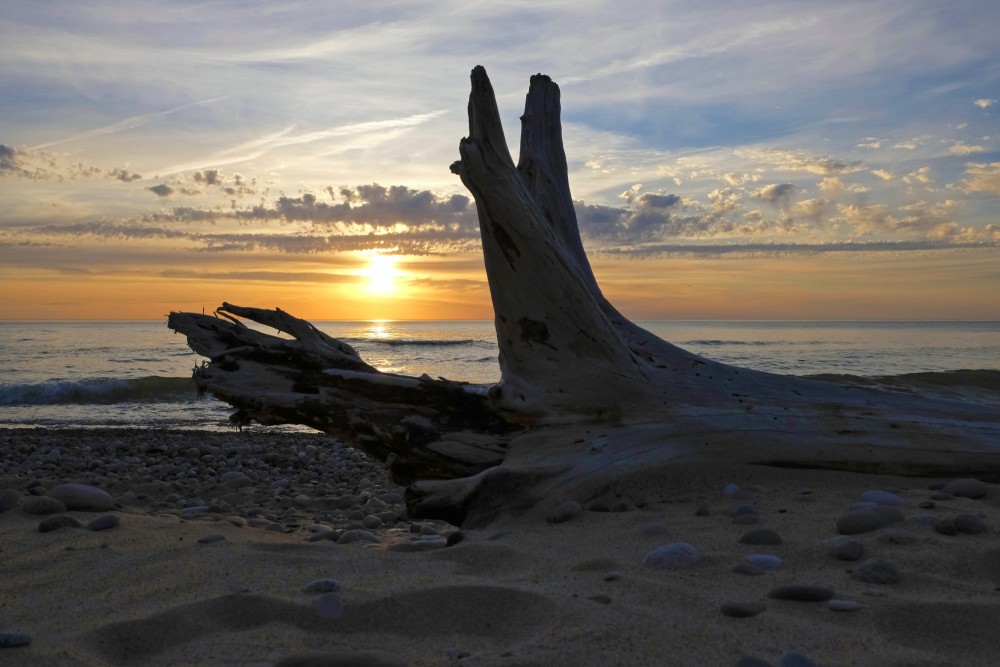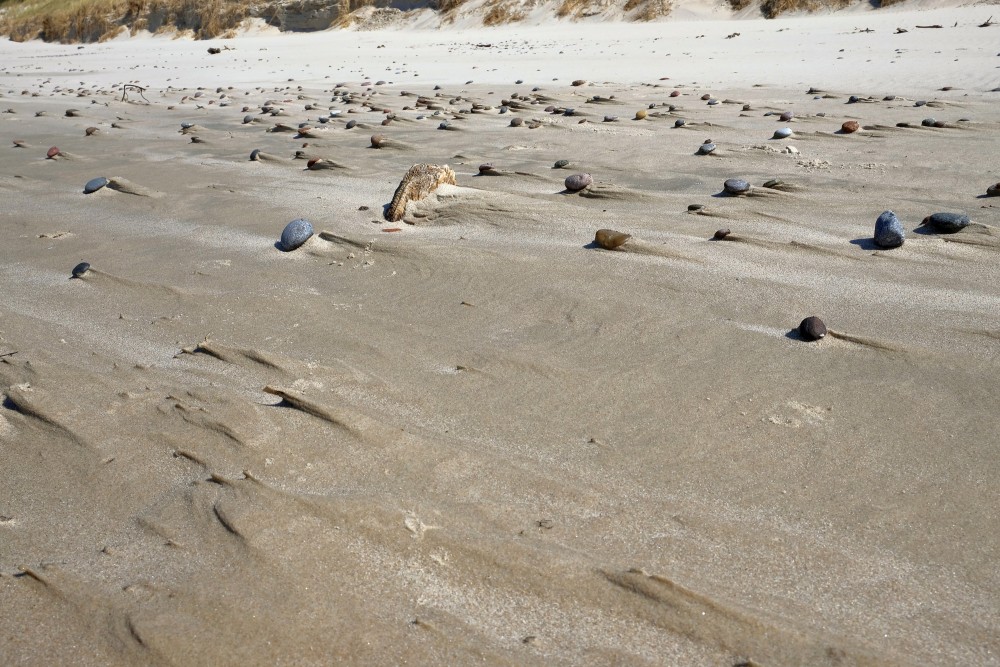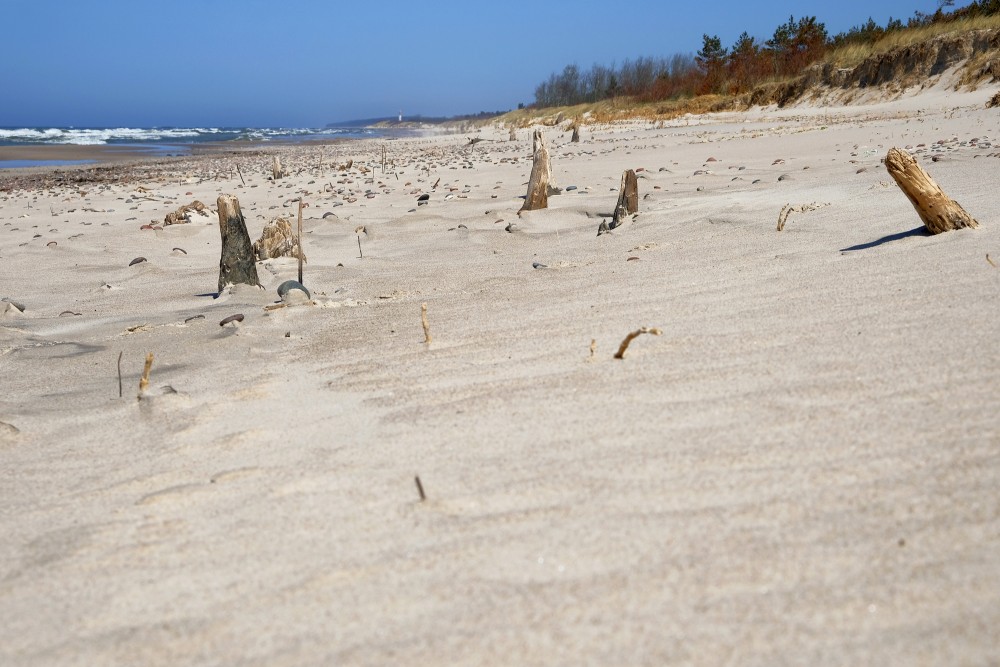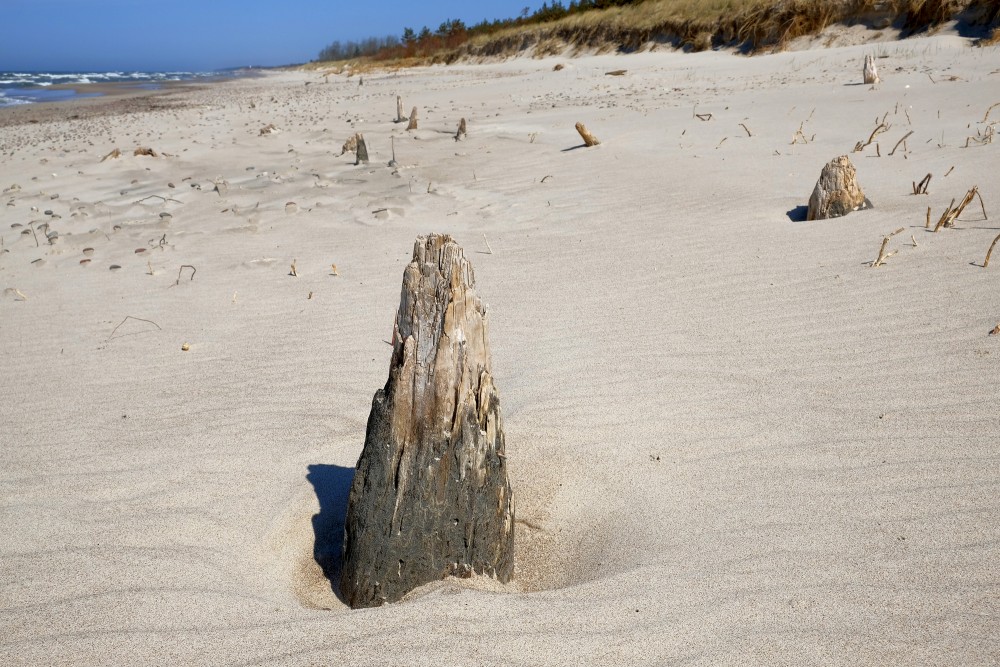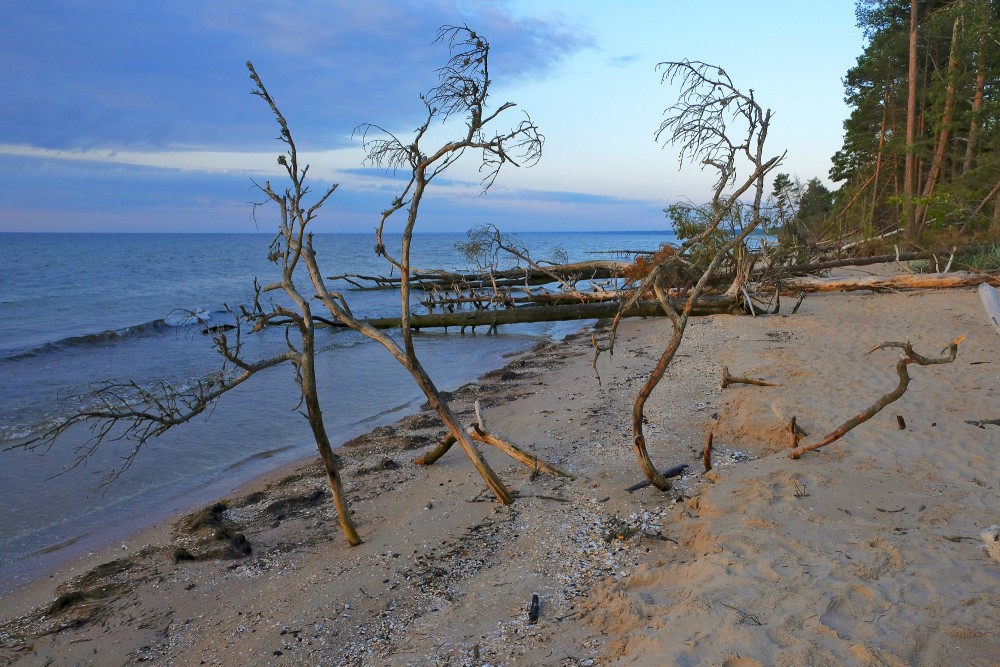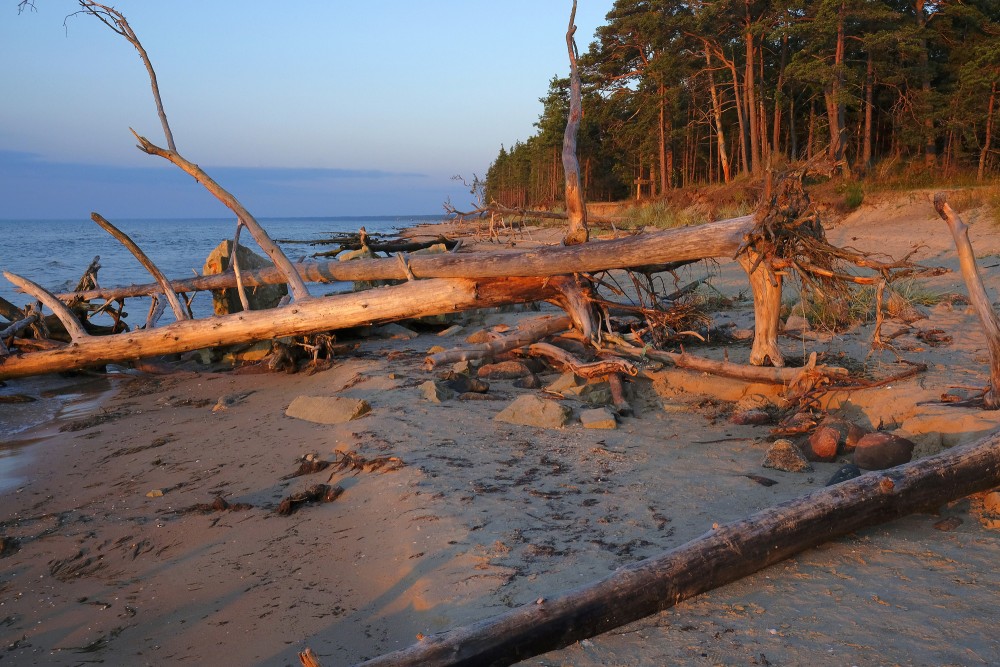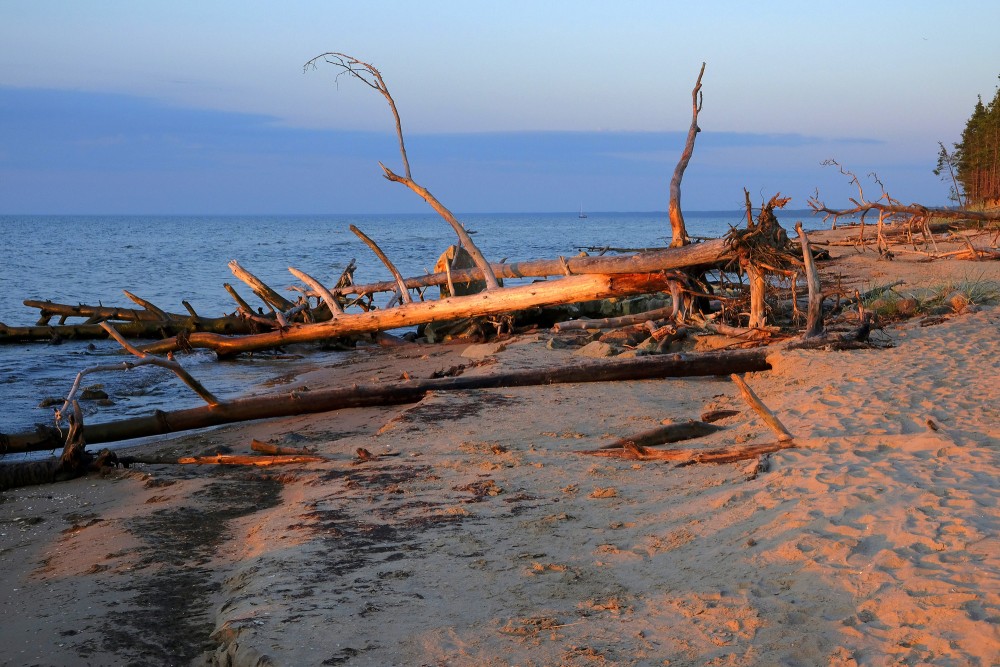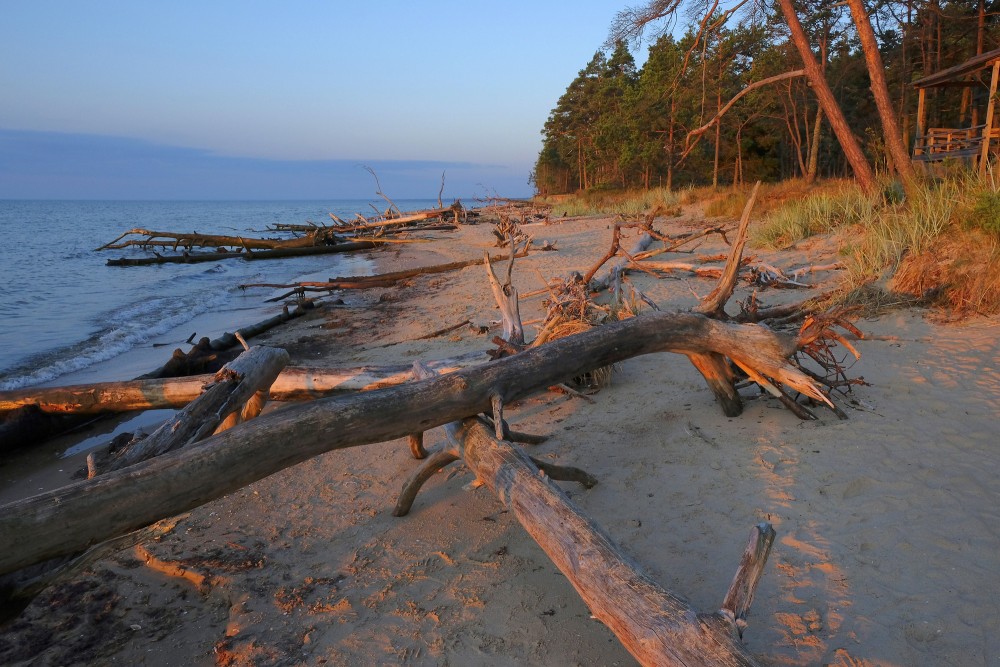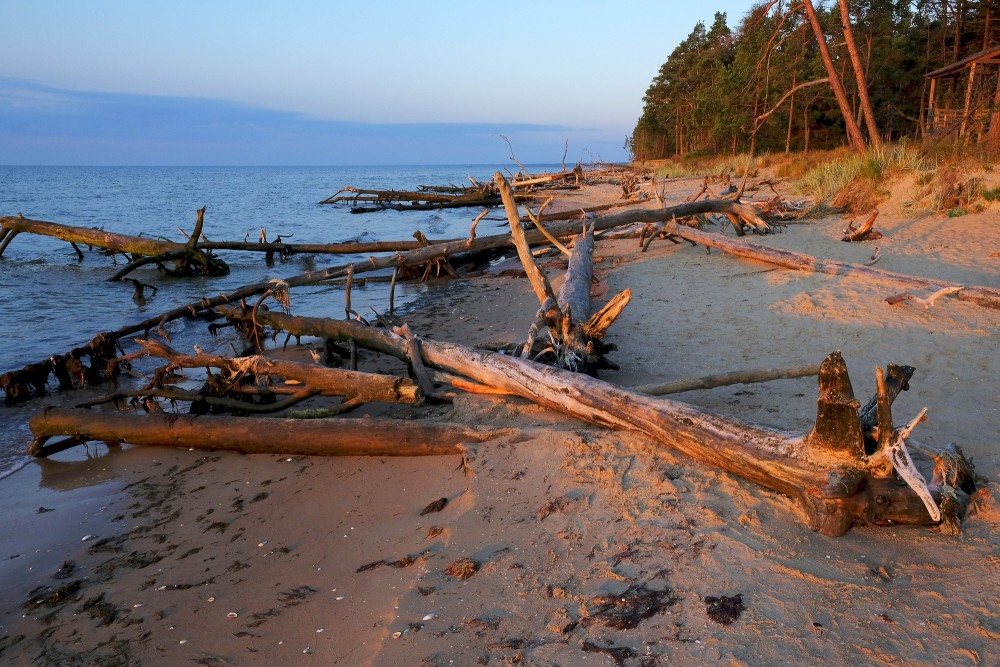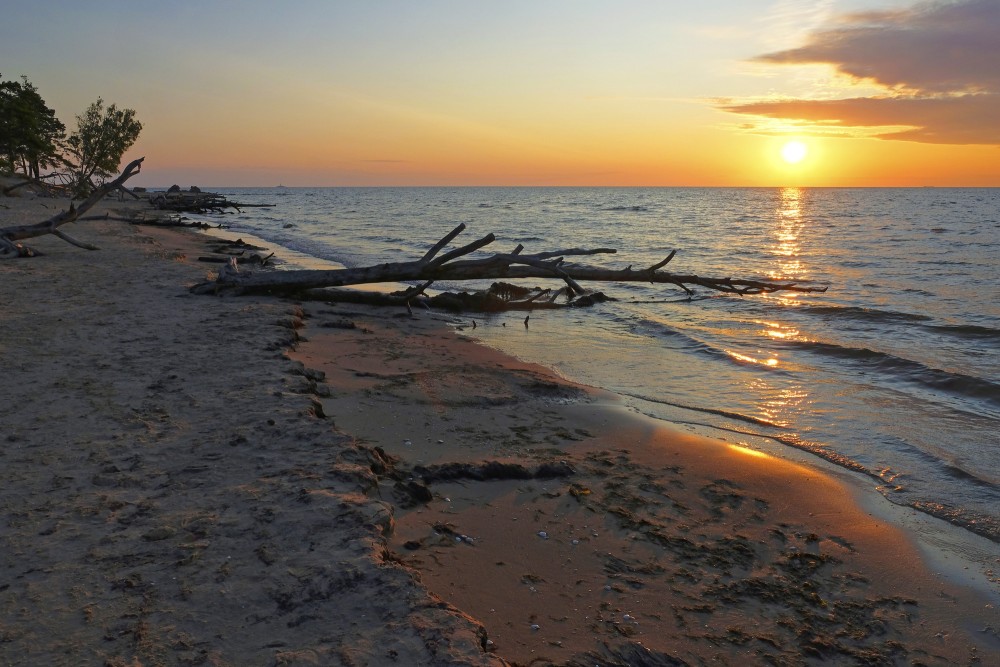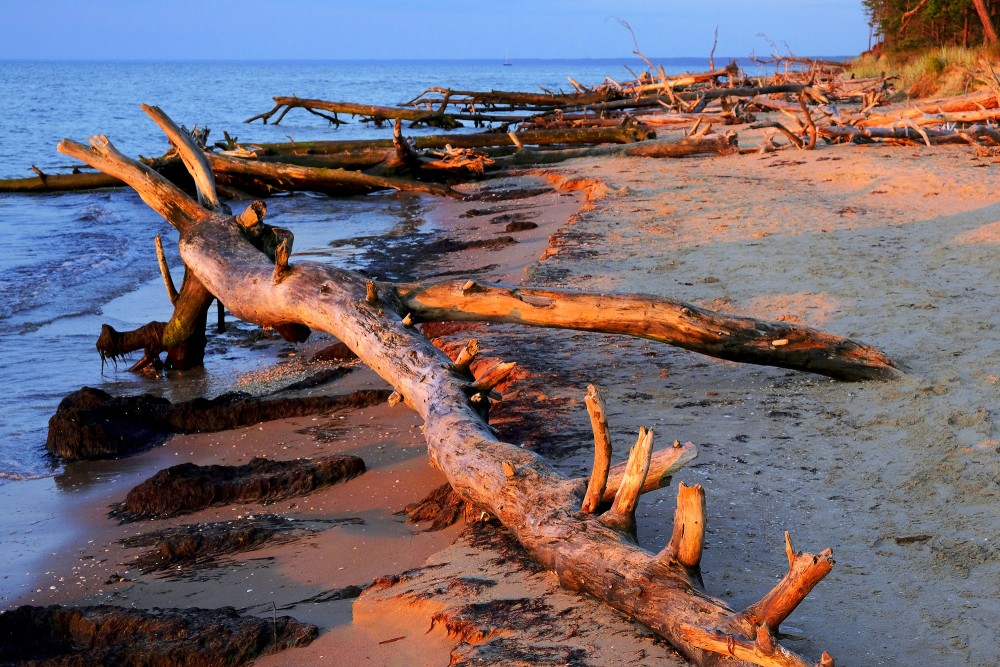Coastline
The coast, also known as the coastline or seashore, is the area where land meets the sea or ocean, or a line that forms the boundary between the land and the ocean or a lake. A precise line that can be called a coastline cannot be determined due to the Coastline paradox.
The term coastal zone is a region where interaction of the sea and land processes occurs. Both the terms coast and coastal are often used to describe a geographic location or region; for example, New Zealand's West Coast, or the East and West Coasts of the United States. Edinburgh for example is a city on the coast of Great Britain.
A pelagic coast refers to a coast which fronts the open ocean, as opposed to a more sheltered coast in a gulf or bay. A shore, on the other hand, can refer to parts of land adjoining any large body of water, including oceans (sea shore) and lakes (lake shore). Similarly, the somewhat related term "[stream bed/bank]" refers to the land alongside or sloping down to a river (riverbank) or body of water smaller than a lake. "Bank" is also used in some parts of the world to refer to an artificial ridge of earth intended to retain the water of a river or pond; in other places this may be called a levee.
While many scientific experts might agree on a common definition of the term "coast", the delineation of the extents of a coast differ according to jurisdiction, with many scientific and government authorities in various countries differing for economic and social policy reasons. According to the UN atlas, 44% of people live within 150 kilometres (93 miles) of the sea.
Formation
Tides often determine the range over which sediment is deposited or eroded. Areas with high tidal ranges allow waves to reach farther up the shore, and areas with lower tidal ranges produce deposition at a smaller elevation interval. The tidal range is influenced by the size and shape of the coastline. Tides do not typically cause erosion by themselves; however, tidal bores can erode as the waves surge up river estuaries from the ocean.
Waves erode coastline as they break on shore releasing their energy; the larger the wave the more energy it releases and the more sediment it moves. Coastlines with longer shores have more room for the waves to disperse their energy, while coasts with cliffs and short shore faces give little room for the wave energy to be dispersed. In these areas the wave energy breaking against the cliffs is higher, and air and water are compressed into cracks in the rock, forcing the rock apart, breaking it down. Sediment deposited by waves comes from eroded cliff faces and is moved along the coastline by the waves. This forms an abrasion or cliffed coast.
Sediment deposited by rivers is the dominant influence on the amount of sediment located on a coastline. Today riverine deposition at the coast is often blocked by dams and other human regulatory devices, which remove the sediment from the stream by causing it to be deposited inland.
Like the ocean which shapes them, coasts are a dynamic environment with constant change. The Earth's natural processes, particularly sea level rises, waves and various weather phenomena, have resulted in the erosion, accretion and reshaping of coasts as well as flooding and creation of continental shelves and drowned river valleys (rias).
Types of coast
According to one principle of classification, an emergent coastline is a coastline which has experienced a fall in sea level, because of either a global sea level change, or local uplift. Emergent coastlines are identifiable by the coastal landforms, which are above the high tide mark, such as raised beaches. In contrast, a submergent coastline is one where the sea level has risen, due to a global sea level change, local subsidence, or isostatic rebound. Submergent coastlines are identifiable by their submerged, or "drowned" landforms, such as rias (drowned valleys) and fjords.
According to a second principle of classification, a concordant coastline is a coastline where bands of different rock types run parallel to the shore. These rock types are usually of varying resistance, so the coastline forms distinctive landforms, such as coves. Discordant coastlines feature distinctive landforms because the rocks are eroded by ocean waves. The less resistant rocks erode faster, creating inlets or bay; the more resistant rocks erode more slowly, remaining as headlands or outcroppings.
Other coastal categories:
- A cliffed coast or abrasion coast is one where marine action has produced steep declivities known as cliffs.
- A flat coast is one where the land gradually descends into the sea.
- A graded shoreline is one where wind and water action has produced a flat and straight coastline.
